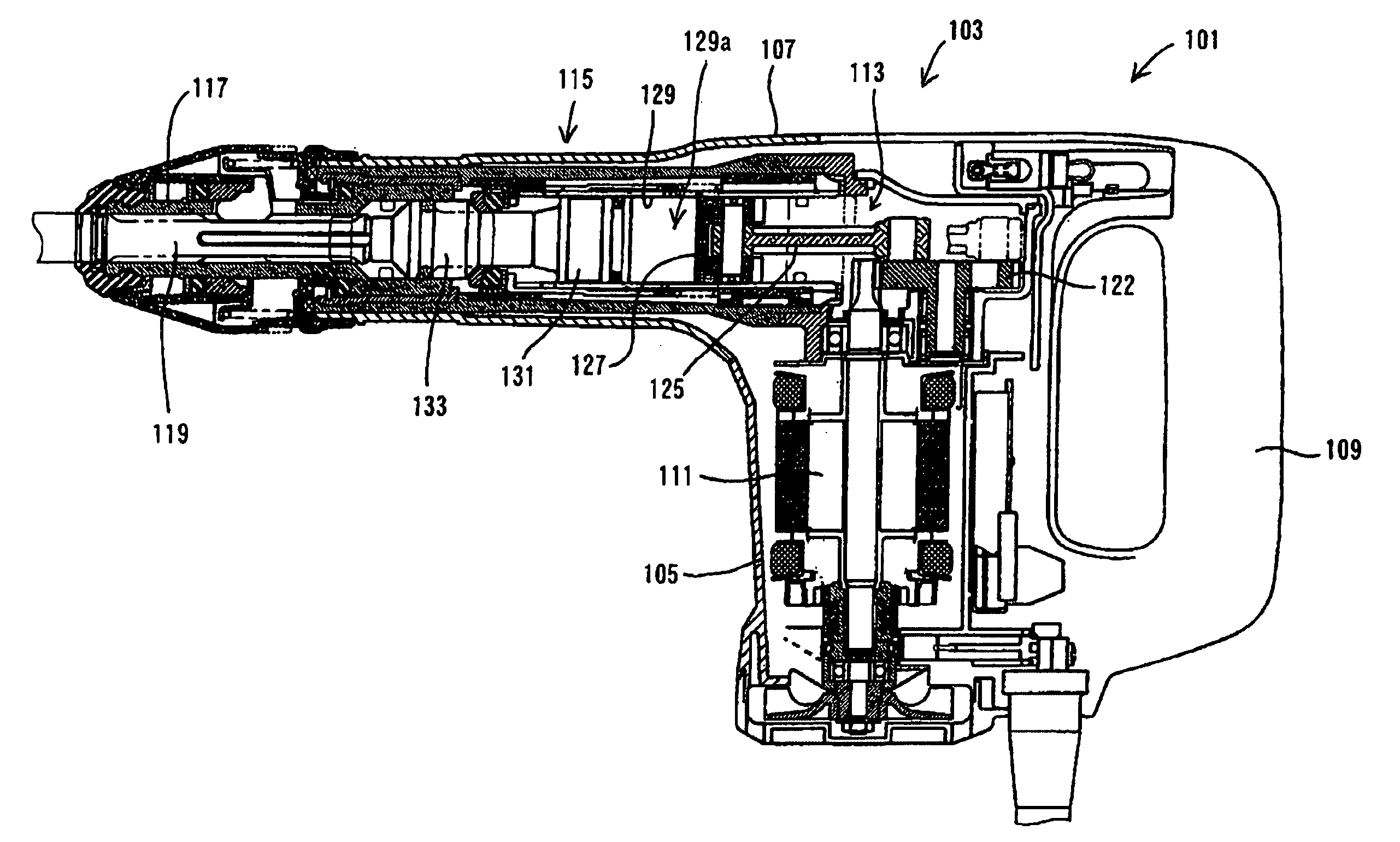Power tool having pneumatic vibration dampening
a technology of pneumatic dampening and power tools, which is applied in the field of power tools, can solve the problems of unfavorable counterweight reduction, unfavorable reducing of vibration in power tools, and undesired vibration toward the rear side or toward of power tools, so as to achieve the effect of alleviating vibration in power tools
- Summary
- Abstract
- Description
- Claims
- Application Information
AI Technical Summary
Benefits of technology
Problems solved by technology
Method used
Image
Examples
first representative embodiment
[0037]First representative embodiment of the present invention will now be described with reference to the drawings. FIGS. 1 and 2 show an electric hammer 101 as a representative embodiment of the power tool according to the present invention. FIG. 1 is a sectional view showing the entire electric hammer 101. FIG. 2 is a block diagram of the control system of the electric hammer 101 shown in FIG. 1.
[0038]As shown in FIG. 1, the representative electric hammer 101 includes a body 103, a tool holder 117 connected to the tip end region of the body 103, and a hammer bit 119 detachably coupled to the tool holder 117. The hammer bit 119 is a feature that corresponds to the “tool bit” according to the present invention.
[0039]The body 103 includes a motor housing 105 that houses a driving motor 111, a gear housing 107 that houses a driving force transmitting mechanism 113 and a striking mechanism 115, and a handgrip 109. The driving force transmitting mechanism 113 converts the rotating outp...
second representative embodiment
[0081]Second representative embodiment is now described in detail in reference to FIGS. 5 to 13. As to the feature of the second representative embodiment that is substantially identical to the feature of the first representative embodiment, same reference number is used and detailed explanation is abbreviated for the sake of convenience. In the electric hammer 201 according to the second representative embodiment, a vibration sensor 500 for detecting acceleration (detecting information about vibration) caused in the region of the handgrip 109 is disposed within the body 103. The acceleration caused in the region of the handgrip 109 is a feature that corresponds to the “vibration information” in the present invention.
[0082]Further, in the electric hammer 201, the vibration sensor 500 detects acceleration caused in the body 103 of the hammer 201, and the detected information is inputted to the CPU 230 via the input interface circuit 250 as shown in FIG. 6. The vibration sensor 500 an...
PUM
| Property | Measurement | Unit |
|---|---|---|
| crank position angle | aaaaa | aaaaa |
| crank position angle | aaaaa | aaaaa |
| carrier frequency | aaaaa | aaaaa |
Abstract
Description
Claims
Application Information
 Login to View More
Login to View More - R&D
- Intellectual Property
- Life Sciences
- Materials
- Tech Scout
- Unparalleled Data Quality
- Higher Quality Content
- 60% Fewer Hallucinations
Browse by: Latest US Patents, China's latest patents, Technical Efficacy Thesaurus, Application Domain, Technology Topic, Popular Technical Reports.
© 2025 PatSnap. All rights reserved.Legal|Privacy policy|Modern Slavery Act Transparency Statement|Sitemap|About US| Contact US: help@patsnap.com



